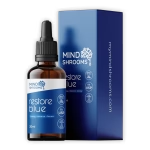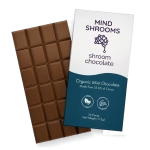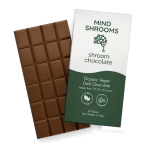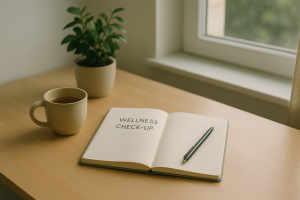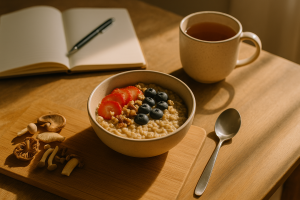Long before mushrooms became trendy in wellness cafés and adaptogen powders, they were considered sacred allies by cultures across the globe. Not for their novelty — but for their deeply rooted presence in healing traditions, spiritual practices, and community health systems.
From the snowy forests of Siberia to the humid woodlands of East Asia, mushrooms have been gathered, brewed, dried, and revered not just as food — but as medicine. And though modern science has only recently begun to validate some of their benefits in laboratory settings, ancestral knowledge about mushrooms runs deep, practical, and profoundly human.
In this article, we’ll trace the global history of mushrooms in traditional medicine — not through the lens of mysticism, but through the practices and observations that gave rise to time-tested uses of fungi. These are the stories of resilience, survival, and relationship with nature, and they remind us that mushrooms have always been more than an ingredient — they have been partners in wellbeing.
Asia: Mushrooms as Tonics and Life-Enhancing Agents
Traditional Chinese Medicine (TCM) is one of the world’s oldest health systems still practiced today. Within its philosophy, mushrooms are considered superior herbs — those that nourish the body without causing imbalance, and can be taken daily for maintenance of vitality.
🧡 Reishi (Ganoderma lucidum)
Known as “Lingzhi” in Chinese, Reishi was traditionally referred to as the “mushroom of immortality.”
Revered for its calming properties and association with long life.
Used to “nourish the heart and calm the spirit,” particularly in cases of restlessness or fatigue.
Often decocted into teas or tonics and consumed regularly in small quantities.
In ancient texts, Reishi was not just valued for its medicinal potential, but for its symbolism — growth from decaying logs into a vivid, long-lasting fungus reflected the themes of transformation and resilience.
🍄 Shiitake and Maitake
Also widely used in Japan and Korea:
Shiitake was believed to support immune strength and digestion, often used in soups and ceremonial meals.
Maitake (“dancing mushroom”) was associated with vitality and was gifted to emperors as tribute.
These were not “quick fixes.” They were incorporated into daily life, cooking, and seasonal transitions to support the body’s natural rhythm.
Russia and Eastern Europe: Forest Mushrooms for Endurance
In Russian folk medicine, the forest was seen as a pharmacy — and mushrooms played a key role. Particularly in cold climates, where plant diversity was limited for much of the year, mushrooms offered powerful nourishment and resilience.
🌲 Chaga (Inonotus obliquus)
Found growing on birch trees in northern regions.
Brewed into tea to support digestion, endurance, and immune defenses, especially during harsh winters.
Known for its charcoal-black appearance and rich antioxidant content.
Referred to as “the gift of God” or “the diamond of the forest” in Siberian tradition.
Unlike modern supplements, Chaga was often consumed in simple decoctions — boiled for hours, strained, and drunk slowly, often in groups or during community gatherings.
North and Central America: Functional Mushrooms in Ritual and Medicine
Among Indigenous groups across North America, mushrooms were often integrated into ceremonial and healing contexts — not as isolated remedies, but as part of a holistic system of balance between body, spirit, and environment.
🌀 Turkey Tail (Trametes versicolor)
Used in teas and infusions to support respiratory health and general vitality.
Recognized for its ability to grow on fallen logs — symbolic of renewal and the cycle of life.
Still used today in integrative therapies around the world, based on its polysaccharide-rich profile.
Mushroom usage was intertwined with knowledge of the land, and passed orally through generations, often along with ritual songs, seasonal timing, and ecological teachings.
Africa and the Middle East: Culinary Meets Medicinal
While Africa’s use of mushrooms in traditional medicine is less widely documented in Western literature, oral history and regional traditions suggest that mushrooms have long held culinary-functional roles, particularly in forested and highland communities.
Certain wild mushrooms were considered valuable during pregnancy, for nourishment and immune support.
Dried mushrooms were stored and used during dry seasons for their long shelf-life and nutrient density.
In the Middle East, mushrooms appear more in culinary-medicinal hybrids — where foods are chosen for both taste and function, rather than being classified strictly as “medicine.”
Europe: Folk Remedies and Seasonal Wisdom
In pre-modern Europe, mushrooms were part of folk healing, often gathered in spring and autumn and used for broths, tonics, and remedies.
🌦️ Porcini, Morels, and Field Mushrooms
Valued for their nutrient density and grounding energy during seasonal transitions.
Often included in “tonic broths” given to those recovering from illness or childbirth.
Used with herbs like nettle, garlic, and thyme to support strength, digestion, and warmth.
Mushrooms were not universally trusted — in fact, knowledge of edible vs. toxic mushrooms was critical and highly respected. Mushroom foragers (especially elders and herbalists) held an essential role in rural communities.
Patterns Across Traditions
Despite their geographic and cultural differences, traditional uses of mushrooms share several remarkable similarities:
They were consumed regularly, not sporadically, often as part of meals or rituals.
They were seen as balancing — supporting the body’s natural processes, not overpowering them.
They were often linked to resilience — emotional, immune, and energetic.
They were not “hyped” — but deeply integrated into cultural rhythms: seasonal cycles, transitions, rites of passage.
And notably: the mushrooms used were edible, non-psychoactive, and non-stimulant. Their effect was slow, cumulative, and stabilizing, rather than instant or extreme.
What Traditional Medicine Gets Right — and Why It Still Matters
In today’s world of high-speed wellness trends, it’s easy to forget that healing has always been slow, relational, and rooted in consistency.
Traditional medicine gets a few essential things right:
The power of ritual: Health is not just about nutrients; it’s also about timing, preparation, intention, and context.
The role of taste and texture: The best medicine is the one you’re happy to consume. Mushrooms, with their umami depth, are a prime example.
The importance of seasonality: When to eat something can matter as much as what you eat. Many mushrooms were consumed in autumn — preparing the body for winter.
Modern science continues to explore what ancestral knowledge has long embraced: that mushrooms support the whole system. And not by forcing change, but by gently inviting balance.
Bringing Traditional Wisdom Into Modern Life
You don’t need to live in the forest or study herbalism to benefit from this wisdom. You can:
Make mushroom broth once a week with shiitake or maitake, storing it as a base for meals.
Brew teas with culinary-safe dried mushrooms (like Reishi, Turkey Tail, or Chaga).
Incorporate mushrooms into transitional meals — soups in autumn, broths during fatigue, mushroom risottos on low-energy days.
Read up on the cultural origins of the foods you consume. This builds connection, respect, and awareness.
Modern nutrition can be exacting — calories, macros, formulas. Traditional medicine reminds us that intention, season, and preparation are equally powerful.
Conclusion: A Partnership Rooted in History
The story of mushrooms in traditional medicine is not one of miracles or magic. It is a story of relationship — between people and place, body and season, daily life and long-term vitality.
These fungi have nourished kings and villagers, monks and mothers, warriors and healers. Not because they were a cure-all — but because they were trustworthy, gentle, and wise.
Today, as we look for ways to live more connected, calm, and balanced lives, mushrooms offer more than nutrients — they offer perspective.
A reminder that some of the most effective tools for resilience come not from the lab — but from the forest floor.



